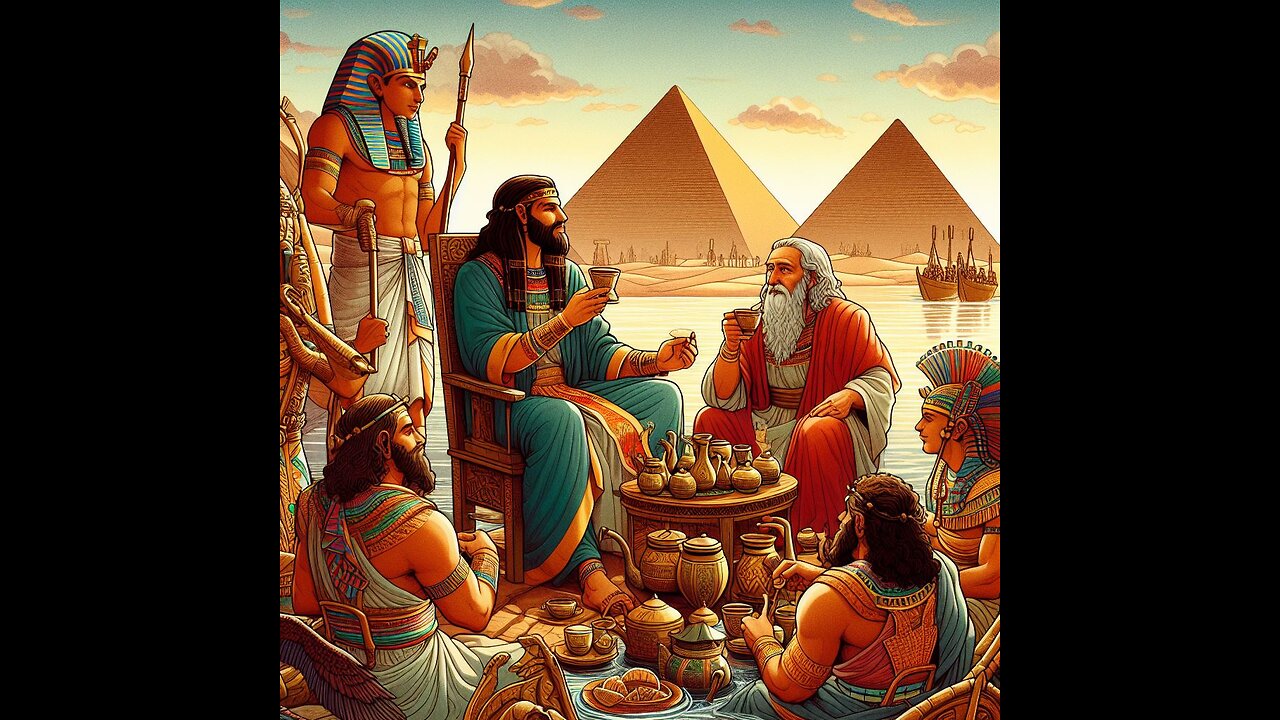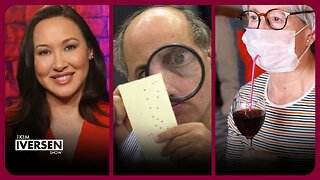Premium Only Content

Joseph and Moses found?
Joseph, Moses and Faith.
The bizarre and twisted public debate on faith has long been unseemly and unedifying. Two popular positions at polar opposites fail to encompass a faith based embrace of life devoted to bible reading and fellowship. Either ‘scientific’ understanding based on evolution as a theory paradigm, or ‘creationist’ understanding based on a literal view of the Bible in its’ evolved form, is all that is encompassed in public discourse. A celebrated trial, known as the ‘Scopes Monkey Trial’ dating back to 1925 in Tennessee, had ‘decided’ on the state view of creationism, but later was overturned in favour of ‘science.’ Only the so called science embraced Nazi style ideology of race understood through phrenology and the ‘creationism’ that the state had posited was rejected by legislator who posited it who said he hadn’t thought through the implications. There are those in todays polarised world who embrace either extreme. However, faith seems more numerously to be embraced by working scientists, and members of the clergy, who take the view that evolution is a theory that aptly describes how life adapts over time, and that biblical faith is not a view of the Bible being a science text book, but the word of the Living God, which shows God gradually revealing himself to his people over time. The old testament of the Bible, after the fall of the first temple, and as the second is being built, admits that elements of the text had been forgotten and reincorporated as part of the reconsecration. Only the reinstated texts are not highlighted.
So, the Bible is the word of God, not a science textbook. The world was not made in six twenty four hour days, but God’s relationship with man evolved from the world, and the Bible illustrates this over a thousand years as people of faith responded to God’s revelation.
We have two historical people who have some resemblance to two mythical figures of the Bible. Senenmut resembles Moses in some aspects. Yu-ya resembles Joseph in some aspects. I am asking the question, were Senenmut and Yu-ya the inspiration for the Biblical narratives revealing God? If they were, then the narrative is seen in a new light. Joseph was born after Moses. It does not diminish the Bible, but provides a new understanding for the faithful.
Senenmut Moses
Senenmut was an 18th Dynasty ancient Egyptian architect and government official. He was born to literate provincial parents, Ramose and Hatnofer, from Iuny (modern Armant) and was of low commoner birth. Senenmut is known to have had three brothers (Amenemhet, Minhotep, and Pairy) and two sisters (Ahhotep and Nofrethor). However, only Minhotep is named outside chapel TT71 and tomb TT353, in an inventory on the lid of a chest found in the burial chamber of Ramose and Hatnofer. More information is known about Senenmut than many other non-royal Egyptians because the joint tomb of his parents (the construction of which Senenmut supervised himself) was discovered intact by the Metropolitan Museum in the mid-1930s and preserved1.
Senenmut first enters the historical record on a national level as the “Steward of the God’s Wife” (Hatshepsut) and “Steward of the King’s Daughter” (Neferure). After Hatshepsut was crowned pharaoh, Senenmut was given more prestigious titles and became high steward of the king. Senenmut supervised the quarrying, transport, and erection of twin obelisks, at the time the tallest in the world, at the entrance to the Temple of Karnak. Neither stands today though they were commemorated in the Chapelle Rouge. Karnak’s Red Chapel was intended as a barque shrine and may have originally stood between the two obelisks. Senenmut’s masterpiece building project was the Mortuary Temple of Hatshepsut, also known as the Djeser-Djeseru, designed and implemented by Senenmut on a site on the west bank of the Nile, close to the entrance to the Valley of the Kings.
In some ways Senenmut was Moses. He seems to have been adopted by Hatshepsut as a young girl, and then raised as a prince of Egypt. He was an Egyptian architect. For some reason, towards Senenmut’s later years, or soon after, he was erased from history by a successor to Hatshepsut. We don’t know why. He has been portrayed as Hatshepsut’s husband or consort, but he may have been an adopted son instead. The name ‘Moses’ may well be related by an adoptive brother, Pharoah Tuthmoses. The idea of worship to a single deity may have been carried forward to Akhenaten’s reign.
Joseph Yuya
Yuya was a powerful ancient Egyptian courtier during the Eighteenth Dynasty of Egypt (circa 1390 BC). He was married to Thuya, an Egyptian noblewoman associated with the royal family, who held high offices in the governmental and religious hierarchies. Their daughter, Tiye, became the Great Royal Wife Amenhotep III . Yuya and Thuya are known to have had a son named Anen, who carried the titles “Chancellor of Lower Egypt”, “Second Prophet of Amun”, “Sm-priest of Heliopolis”, and “Divine Father” . They may also have been the parents of Ay, an Egyptian courtier active during the reign of Akhenaten, who eventually became pharaoh as Kheperkheprure Ay .
Yu-ya as Joseph may be suggested by his relationship to Pharoah which wasn’t unique, but in time in place may well suggest he was a counsellor who interpreted dreams and was rewarded. The very tombstone name is suggestive that he had been buried under the name of the Lord, but the Egyptians could not pronounce or spell Jahweh.
So, I used AI to create an image.
The Egyptians Senenmut and Yuya having tea with biblical figures Moses and Joseph on the Nile river with pyramids in the background.
-
 2:56
2:56
Faith and Philosphy
2 years ago $0.01 earnedPrayer of thanks for end of projects
83 -
 59:31
59:31
Man in America
12 hours agoEven WW3 Can't Stop What's Coming—the Cabal is COLLAPSING w/ Todd Callender
68.4K61 -
 3:51:28
3:51:28
I_Came_With_Fire_Podcast
12 hours agoSPECIAL LIVE FIRE w/ Bearded Viking Mead Co
63.6K9 -
 1:28:52
1:28:52
Kim Iversen
11 hours agoUnmasking the Truth: Most Censored Historian On Past Election Meddling, COVID, and Trump
63.8K60 -
 2:10:00
2:10:00
TheSaltyCracker
9 hours agoNow Lefties Lose Bathroom War ReeEEeE Stream 11-20-24
129K247 -
 1:03:31
1:03:31
Fresh and Fit
10 hours agoWhy Men Need Options To Avoid Falling For This!
107K12 -
 1:26:56
1:26:56
Flyover Conservatives
1 day agoWar Raging, Bank Closing, and Humanoid Robots: It’s Biblical! - Clay Clark | FOC Show
47.3K12 -
 5:32:27
5:32:27
tacetmort3m
1 day ago🔴 LIVE - MY MOST ANTICIPATED GAME IS OUT - STALKER 2 LAUNCH DAY
23.1K -
 1:05:16
1:05:16
Glenn Greenwald
12 hours agoBiden Again Isolates The U.S. To Protect Israel; Will The Trump Admin Be Any Different On Israel? U.S. To Send Ukraine Civilian-Killing Landmines | SYSTEM UPDATE #369
97.2K86 -
 2:21:27
2:21:27
WeAreChange
11 hours agoPSYOPS Launched To Sabotage Trump's Cabinet! MAGA Fights Back!
59K11